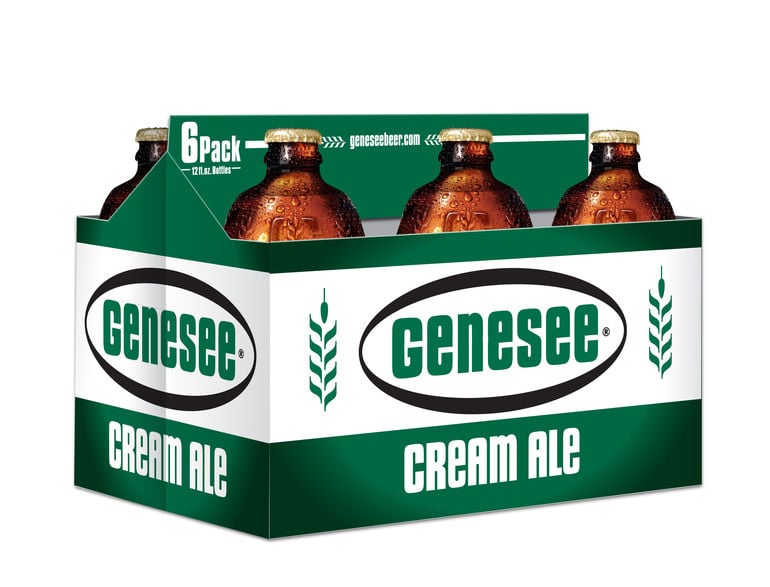Start 14-Day Trial Subscription
*No credit card required

Style Studies: Cream Ale
Long before the appearance of the widely-accepted standard for the style - Genesee Cream Ale - nearly fifty years ago, this hybrid-style beer was something of an enigma to many beer lovers. The ambiguity, however, isn’t to be found in the style’s deep complexity or inexplicable origins. In fact, the style is very much a product of pure American pragmatism. You might even say that Cream Ale – also known throughout its comparatively short history as sparkling or present use ale – is a reaction beer, pure and simple.
As the light lager beer styles made their way into this country during the late 19th century, the obvious appeal of a clean, crisp, easy-drinking beer became painfully obvious to the traditional ale brewers already established in America. Finding it increasingly difficult to justify the production of dark and dense ales in the face of a changing public palate, these industrious brewers began experimenting with non-traditional ingredients and brewing techniques in order to take their ales in a brand new direction. To substantially lighten the color and body of their beers, brewers added adjuncts like maize to the grain bill. The additional advantage here, beyond adding some smoothness and a paler color to the beer, is that maize (or corn) was a cheaper ingredient than malted barley. Paired with the frequent use of lower quality 6-row barley instead of the higher grade 2-row, enterprising brewers were able to create a much more marketable product at a lower cost.
To minimize the tell-tale fruitiness produced by common ale yeast strains, the beer was often conditioned at cooler temperatures, not unlike the lagers for which they were designed to compete. The use of adjuncts and a colder fermentation resulted in an ale style (assuming you concede that ale is identified as such by the top-fermenting yeast strain, not by the fermentation temperature) that looked, smelled and tasted reasonably similar to the popular lager beers of the day. Early examples of cream ale had characteristics in common with both ales and lagers for the express purpose of creating a style that could compete head to head with the German-influenced lager styles like Pilsners. Boasting a shorter fermentation time than their rival lagers, along with reduced ingredient costs, Cream Ale provided a more economically viable, moderately refreshing alternative to the popular lager beers. This secured Cream Ale its eventual “hybrid” designation and marked it as one of the earliest examples of a uniquely American beer style.
Despite the brewers best efforts, lagers continued to grow in popularity right up until Prohibition and the Cream Ale style never succeeded in capturing the interest of an evolving (or devolving) market. After being dealt a knockout blow during Prohibition, like many others, this style would languish in obscurity for decades. Once Prohibition was repealed, the adjunct-laden lager quickly arose as the dominant beer in America – a distinction it has yet to relinquish. Only a handful of breweries, including the afore-mentioned “Genny Cream” from High Fall Brewing Co. in Rochester, NY., would keep the Cream Ale style from fading into brewing history as anything more than a mere footnote.

Post-Prohibition Cream Ale continued to carry on the tradition of pragmatism and innovation. Several examples began to utilize lager yeast strains in conjunction with ale strains to produce an even crisper, cleaner beer than the earlier examples. This technique further blurred the lines between ale and lager. A method called krausening – a means of achieving carbonation through the addition of actively fermenting wort into un-carbonated, fully-fermented beer – was and still is occasionally used to condition Cream Ale as well.
Possibly the most exciting innovations are coming from the small batch craft brewers who are helping this misunderstood and oft-maligned style to see something of a comeback these days. By using higher quality, all-grain ingredients and recipe alterations that continue to push the traditional style parameters, Cream Ale is once again on the lips and in the bellies of beer lovers throughout the U.S. Lagunitas Brewing Company, out of Petaluma, CA, for example, brews their version of Cream Ale – called Sirius – bigger than most at over 7.0% ABV. Better ingredients and more of them help an otherwise infamously insipid beer get noticed once again.
Regardless of modern nuance, the accepted style parameters generally call for a pale straw colored ale with great clarity and a low to medium-sized head. The nose should yield soft malt notes and may display some sweet corn-like aromas. There will generally be little or no hop character in the nose, at least in the more conventional examples. The flavors are typified by moderate maltiness and low hop bitterness as well. The balance of flavors can vary between slightly sweet and corn-like to dry and clean. The mouth feel ought to be light and clean, like a lager, but perhaps with a touch more body. High attenuation is common for the style and the aggressive carbonation should leave a clean, dry finish. All in all, a lager-drinkers ale.
While Cream Ale may still struggle with its identity from time to time, one thing is for certain. Cream Ale is a thoroughly American beer style with pragmatic and patchwork beginnings, much like the story of America itself. Next time you come across a Cream Ale, grab one and toast to the inventive spirit of America and the perseverant nature of beer!
STATS: OG: 1.042 – 1.055, IBUs: 15 – 20, SRM: 2.5 – 5, ABV: 4.2 – 5.6%
EXAMPLES: Genesee Cream Ale, Sleeman Cream Ale, New Glarus Spotted Cow, Lagunitas Sirius, Foothills Brewing Carolina Blonde Cream Ale



